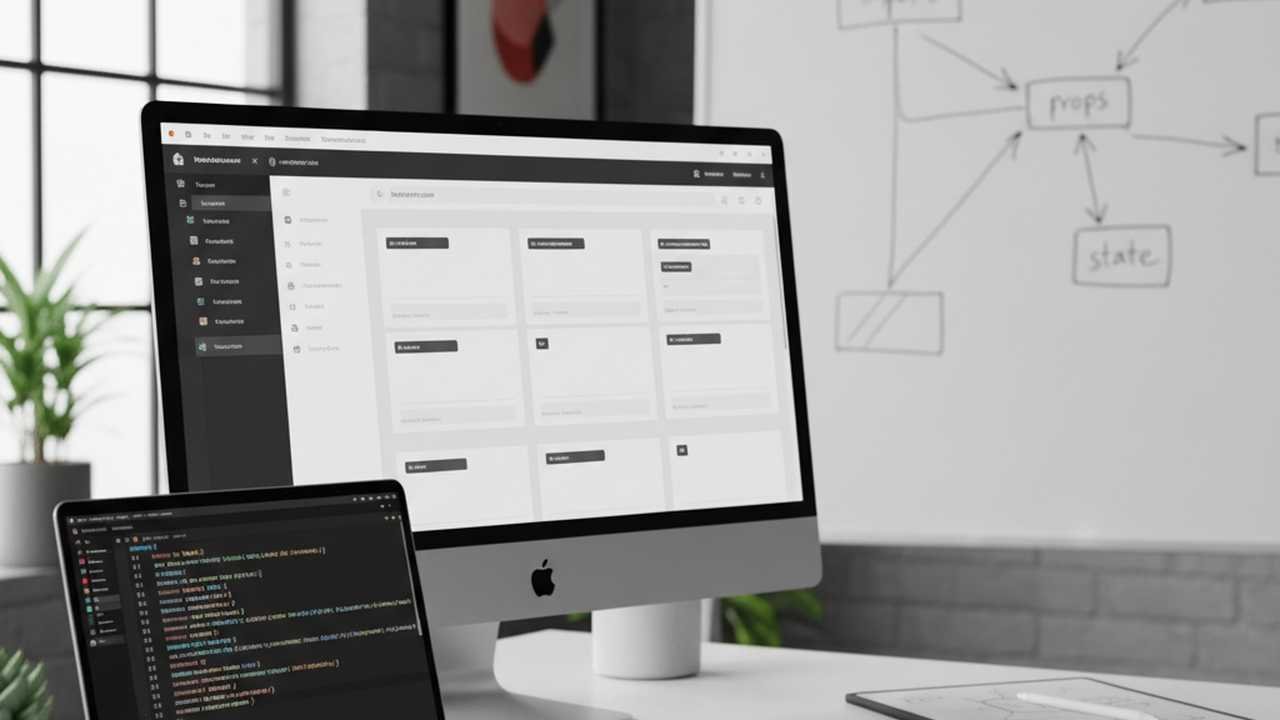Why React Is the Ultimate Game-Changer for Modern Developers
In today’s digital age, speed and interactivity are everything. Whether you’re crafting a sleek e-commerce platform, a dynamic dashboard, or a responsive booking system, users crave instant feedback and seamless experiences. React isn’t just another JavaScript library – it’s the heartbeat of the modern web. Created by Facebook, React revolutionized the way developers build user interfaces by focusing on reusable components and virtual DOM rendering. This means apps built with React don’t just load fast – they feel alive. Imagine clicking through a travel site that updates availability in real time, or a hotel booking form that responds instantly to every tap and gesture. That’s the magic of React. And here’s the twist – just like travelers rush to grab a Marriott educator discount before it expires, businesses today race to implement React before falling behind competitors. The web waits for no one, and those who hesitate risk being left in the static past. If you want your digital projects to thrive in 2025 and beyond, mastering React is no longer optional – it’s the single most profitable move you can make for your career or your company.
Understanding the Core Principles Before You Start
Before diving into React development, you need to grasp what makes it so powerful. At its core, React is built around components – modular, self-contained units that render independently. This architecture allows you to design once and reuse infinitely, saving time and eliminating redundancy. Picture a website where every section – from navigation bars to booking cards – functions as an independent organism. When you modify one, it updates everywhere. This scalability mirrors the reliability of trusted brands offering verified perks like the Marriott educator discount, which educators rely on because of its transparency and consistency. In the same way, React ensures predictable behavior and trustworthy results. The virtual DOM, one of React’s crown jewels, ensures lightning-fast performance by updating only what changes rather than re-rendering entire pages. This efficiency translates into buttery-smooth interfaces that captivate users and boost retention rates. Understanding these concepts is like learning the secret to timeless loyalty – users don’t just visit; they stay, interact, and convert.
Setting Up Your React Environment for Success
Every developer’s first step toward React mastery begins with a solid environment setup. Start by installing Node.js and npm, which serve as your foundation for package management and app execution. Then, initialize your project using Create React App, a toolkit that eliminates the grunt work so you can focus on creativity. Once your boilerplate project is ready, fire up your development server, and you’ll witness the blank canvas that awaits your innovation. The process is seamless, intuitive, and exciting – each command feels like unlocking a new creative door. Think of it like logging into your account to claim a Marriott educator discount – a smooth, guided experience designed for efficiency and reward. From here, you can install additional dependencies, such as React Router for navigation and Axios for data fetching. Every tool you add becomes a brushstroke in your masterpiece. The better your environment, the faster you can iterate, deploy, and impress. React’s ecosystem thrives on community contributions and documentation, ensuring that every developer – from beginners to experts – has the support they need to succeed.
Building Your First Interactive Component
Now comes the thrilling part – creating your first component. Components are the building blocks of every React application. Begin with a simple interactive button. When clicked, it could trigger an animation, fetch live data, or update the UI instantly. You can extend this concept into something larger, such as a responsive booking widget or a dynamic search bar that filters hotels as the user types. Each element breathes life into your interface. Components follow the principle of reusability – build once, reuse forever. For instance, if you were designing a hotel booking app that integrates real-time offers like the Marriott educator discount, you could craft a reusable component displaying the discount banner dynamically. The beauty of React lies in its declarative nature – you describe what you want, and React figures out how to make it happen. Watching your app respond fluidly to user input is electrifying. It’s the moment when your ideas leap from imagination into tangible, interactive motion.
Harnessing State and Props to Manage Data
React’s true brilliance shines when managing data. Two core features – state and props – allow you to build applications that evolve naturally as users interact. The state holds mutable data that changes over time, such as form inputs, live counters, or user selections. The props mechanism enables data sharing between components, ensuring consistency and cohesion across the interface. Imagine you’re creating a hotel reservation form where the Marriott educator discount automatically updates total pricing as the user types their booking details. With React’s state and props, this synchronization happens seamlessly. Every change feels instantaneous, every click meaningful. Users are drawn into an experience that feels personalized, intelligent, and modern. The FOMO factor kicks in – when your competitors’ sites feel sluggish and outdated, yours feels dynamic, alive, and irresistible. Mastering data flow in React isn’t just about coding – it’s about delivering emotion through performance, making users feel valued, and keeping them engaged from start to finish.
Connecting APIs and Delivering Live Data Experiences
Static content is dead. In 2025, real-time data is the currency of engagement. With React, you can fetch live data from APIs and display it instantly, giving users access to up-to-the-second updates. Picture a web app that shows live room availability, fluctuating prices, or limited-time offers such as the Marriott educator discount countdown timer – all without needing to refresh the page. Using tools like Axios or the native Fetch API, you can connect your front-end directly to back-end data sources, delivering dynamic experiences that feel alive. The integration process involves making asynchronous requests and updating components with responses, creating a loop of interactivity that users crave. The more responsive your app, the higher your conversion rates. This immediacy is what separates a forgettable experience from an unforgettable one. Users want authenticity and accuracy, and when your data updates in real-time, it builds trust. That trust transforms casual visitors into loyal customers.
Adding Animations and Transitions for a Premium Feel
A truly interactive web app doesn’t just function – it dazzles. Animations and transitions transform static interfaces into immersive experiences that captivate the senses. With React libraries like Framer Motion or React Spring, you can choreograph every movement to perfection. Buttons can glide, images can fade, and modals can unfold with elegance. Imagine unveiling an exclusive Marriott educator discount offer with a smooth slide-in effect, or having your app’s navigation gently transition between sections like a guided journey. The goal is not just to entertain but to emotionally engage users. Subtle motion signals responsiveness and care, suggesting a brand that invests in user satisfaction. Studies show that websites with polished micro-interactions retain users up to 60% longer than those without. Animation isn’t fluff – it’s functional beauty. It communicates speed, clarity, and modernity, all of which combine to generate urgency and desire. When executed well, every frame tells your user, “You’re in the right place – don’t leave now.”
Optimizing Performance and Security
Performance and security are the unsung heroes of user trust. Your React app might look spectacular, but if it loads slowly or risks breaches, users will vanish instantly. Optimization begins with lazy loading, code splitting, and image compression. By reducing bundle sizes, you deliver lightning-fast interactions. Security comes from enforcing HTTPS, sanitizing inputs, and integrating authentication methods like OAuth. When users submit personal information – especially in applications offering deals like the Marriott educator discount – they must feel their data is safe. Integrating secure payment gateways, encrypted storage, and verified APIs builds credibility. This level of professional care mirrors the reputation of premium brands that value their users’ privacy and loyalty. Performance tuning tools like Lighthouse help diagnose issues and maintain optimal speed scores, ensuring every click feels instantaneous. A secure, fast, and reliable app doesn’t just perform – it persuades. It tells every user that your brand is modern, responsible, and worthy of their trust.
Deploying and Scaling Your React App
Once your web app shines locally, it’s time to share it with the world. Deployment transforms your project from code to commerce. Hosting platforms like Vercel, Netlify, or AWS Amplify simplify this process, enabling continuous deployment pipelines that update in real time. Imagine your app going live, instantly accessible across continents, serving users eager for the latest interactive experience – or perhaps racing to claim limited deals such as the Marriott educator discount. Scalability becomes crucial at this stage. Using CDN networks, caching strategies, and serverless functions ensures your app can handle massive traffic surges without faltering. Each user’s session should feel as smooth as the first. The satisfaction of watching visitors engage, purchase, and share your platform is unmatched. Deployment is not the end; it’s the beginning of growth. Regular monitoring, analytics integration, and user feedback loops fuel ongoing optimization. A React app, once deployed, becomes a living organism – evolving, adapting, and thriving in the fast-paced ecosystem of digital innovation.
Conclusion: Seize the Moment – Build Now Before It’s Too Late
The world of web development is racing ahead. Every brand, every developer, every visionary is pushing to deliver experiences that feel personal, intelligent, and instantaneous. React is the vehicle that can take you there faster than anything else. With its unparalleled efficiency, reusability, and performance, it empowers you to build apps that users not only use but love. Delaying your learning curve now is like missing out on a once-in-a-lifetime opportunity – like letting a Marriott educator discount expire while others enjoy exclusive perks. The tools are free, the documentation is open, and the demand is skyrocketing. Companies are paying top dollar for developers who can craft scalable, interactive, and secure applications. Don’t wait for tomorrow; the digital race is happening now. Take this guide, apply what you’ve learned, and start building. Whether your goal is to launch your dream app, boost your portfolio, or elevate your business, React is your ticket to the next level. The future of interactivity is unfolding before your eyes – grab it, build it, and own it.

